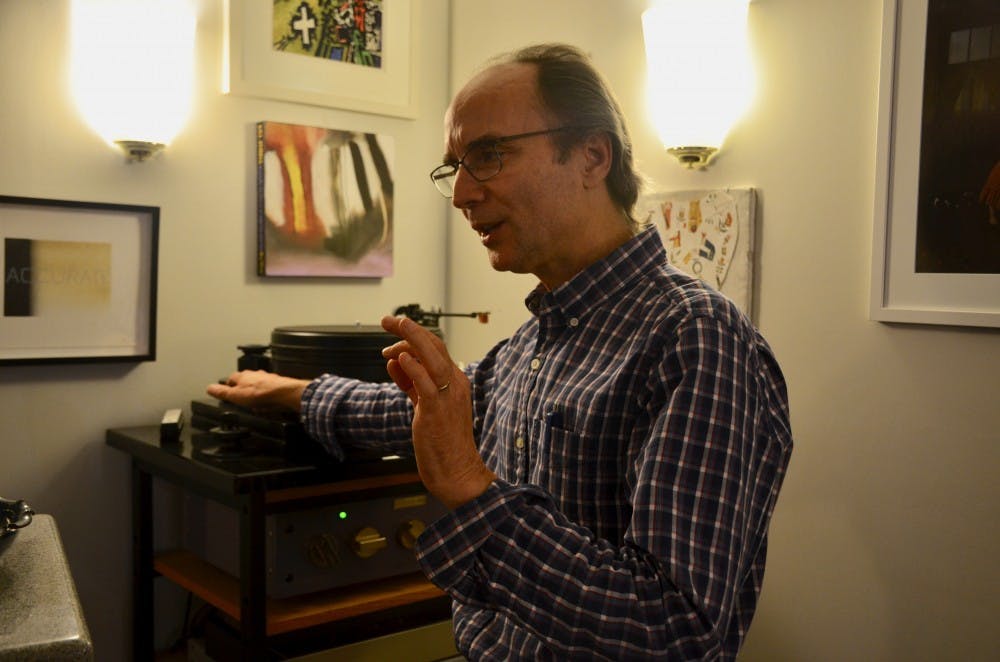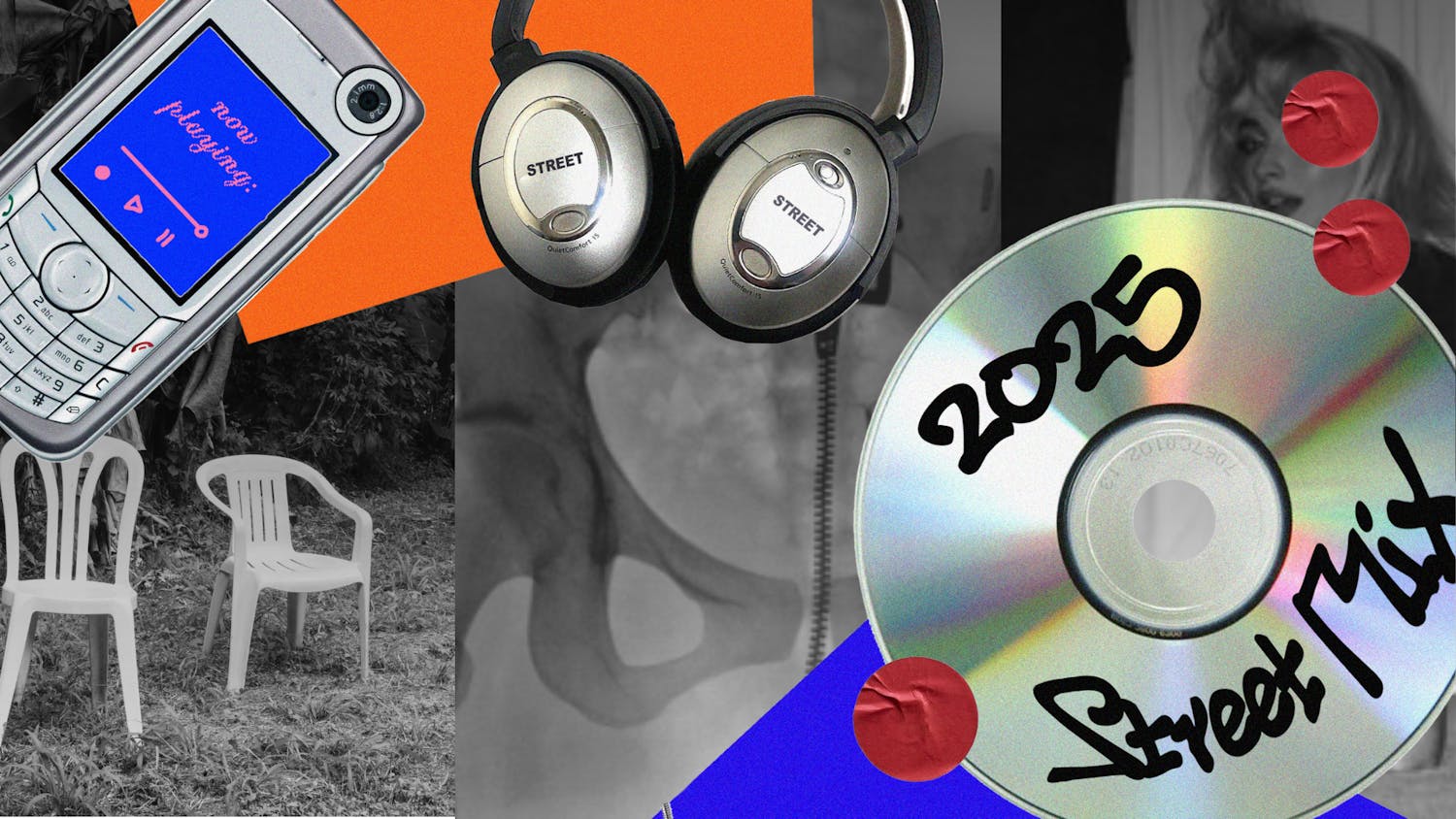You might know Professor Ralph Rosen as a Classical Studies expert, coffee extraordinaire, and Quad resident—but what you might not know is that he’s a master of all things music. While in his apartment a few weeks ago for his biweekly Espresso Open House, my friend pointed out his vast record collection lining his apartment shelves. Naturally, Street followed up with Professor Rosen to hear all about Professor Rosen’s family history, musical tastes and the magic of vinyl.
Professor Rosen's been a self–proclaimed “music fanatic” for most of his life. In his childhood, “there was music around"—his parents were avid classical music listeners and players. His father, a professor from Swarthmore College who played the double bass, provided Professor Rosen with a childhood home brimming with classical music. He was “dragged along to all the orchestra concerts” as a kid. Although his early years of listening were primarily made up of classical artists, further interests in pop, rock, and jazz came later.

Professor Rosen got his first record, Sherry and 11 Others by The Four Seasons, at around six years old. This record was the first in a collection that would grow well into the thousands. However, his tastes went beyond records. In the later '60s, in his hometown, the college town of Swarthmore, he’d “crash” many rock concerts of artists who developed what is now known as classic rock. He saw his first concert in the city at age 14, in the original venue of Philadelphia’s own Electric Factory, which was then a warehouse on 23rd and Cherry Street—he saw Pink Floyd there. His musical interests really began to evolve when he graduated high school. He got “really into jazz when he was around 18." That interest stemmed from his attraction to contemporary classical artists who were composing in the '60s.
As the years went on, his musical experiences, as well as the record collection, continued to grow. The full collection is of a couple thousand, so those albums that couldn’t fit in the apartment had to be laid in storage. Shelf after shelf was lined with alphabetically organized records, while more were tucked away into any space they could fit. Records seemingly spilled out of the apartment’s nooks and crannies.

This sight shifted our conversation to Professor Rosen’s love of vinyl. Although “not opposed to CDs,” he loves the “tactility” of vinyl and that you can really “handle it.” He said, “There is something lost in the way music has gone now. What’s lost is part–ritual and part–interacting with the material. Like a book, there’s a feel to it. You open a nice book and you see the print. It has a kind of aesthetic quality to it.” He found that when CDs came to prominence, they still maintained some of that artistic element, but they were just not quite at the level of vinyl— “everything was too miniaturized.” He argued that with streaming music now, you think more about “what song do I want to hear,” but Professor Rosen said that’s “just not the way I listen.” His listening experience is not just about individual songs but about the records as a whole. Although he doesn’t mind the trend toward digitalizing books, when it comes to music, he can’t help but feel that records are really “what sounds best.” It’s not as if one is "awful" and the other is great: CDs shouldn’t be “demonized.” However, he finds “good vinyl records more musical, more profound, and more relaxing in a way.”
Another magical aspect of the vinyl that Professor Rosen revealed is the cover art. The album art presents a different dimension of the craft that is almost totally lost with digital music today. Vinyl lets the listener really understand the “artisanship” of the works. These vinyl containers held posters, booklets or other little goodies hidden in various sleeve pockets. Most prominent to me of these records was David Bowie’s Blackstar, whose cover art contained features only revealed when rotating the sleeve a certain way or angling the vinyl toward a specific light. Each turn of the sleeve revealed a new hidden characteristic that would have previously gone unnoticed.
The art of vinyl goes beyond the cover design; it also manifests itself in the records themselves. His collection contained records that were black, transparent, white, and turquoise—colors that I didn’t even know records came in. Some records had specifics etchings with messages from the artists that could only be seen by squinting at the right angle. Each record has its own individuality that goes beyond the music. Each is a piece of art in its own way. Professor Rosen showed that musical production used to go beyond the actual music, but was also more about how it was presented. With vinyl, the artwork and design clenched in hand adds another element to the artist’s work and aesthetic intentions.
When it comes to the actual listening, vinyl once again proved to be quite a different experience. Professor Rosen proved that vinyl is a fully immersive experience that more prominently captures music as the artist intended. Truly wanting to get the most out of his records, he has an apartment corner solely dedicated to the technology necessary to play the record and produce what he considers a proper listening experience. The British–made record player made by Nottingham Analogue Studio proved incredibly complex. He set up the totally manual 20–pound record player, which was connected to four or five boxes covered in buttons and dials that had purposes I couldn’t even begin to understand. He first hit a switch that lit up these two light bulbs, as if from a machine in some cheesy sci–fi movie’s laboratory. He then eagerly sat me down in a seat specifically designated as the “best one” for listening, keen on giving me the best audio experience.
Then the music began. It was Kessel Plays Standards by Barney Kessel. Jazz I’d never heard before. Immediately, whether it was the actual record or the quality of the speakers, the listening experience was much more immersive. As Professor Rosen said, “You hear how everything sounds really natural and drum has more of a presence”. It almost felt as if the band was performing right in front of me. Each note seemed so much more crisp than those heard from headphones or a computer.
Most interestingly, he showed me a reissued record with one side issued as a 45 RPM and the other side at 33 RPM. He explained that the artist’s, Procol Harum’s, intention in doing this was for listeners to hear the difference in sound when a record has these different speeds. He then played the record, “A Whiter Shade of Pale,” on each side in order to hear the difference in sound between the two sides—first the 33, then the 45. In one, the voice and instruments seemed more intense, while in another they seemed more passive. This experimentation with listening seems absent in today’s listening experience. He then played the same song, “A Whiter Shade of Pale,” but the digitized version on the same speaker. As Professor Rosen perfectly captured it: “it’s thinner.” For the first time, I understood why people prefer vinyl to digital music.
Professor Rosen proved that vinyl sounds “more musical, more profound, and more relaxing in a way”. Vinyl enhances the audio experience—and I’m not talking about the vinyl many teenagers listen to on kitsch record players they buy from Urban Outfitters. I’m talking about the vinyl of true music fans like Professor Rosen, who view vinyl music as an art form that requires attention, absorption, and precision. To them, vinyl, with the art and the record’s detail, gives music layers that digital music just can’t.







